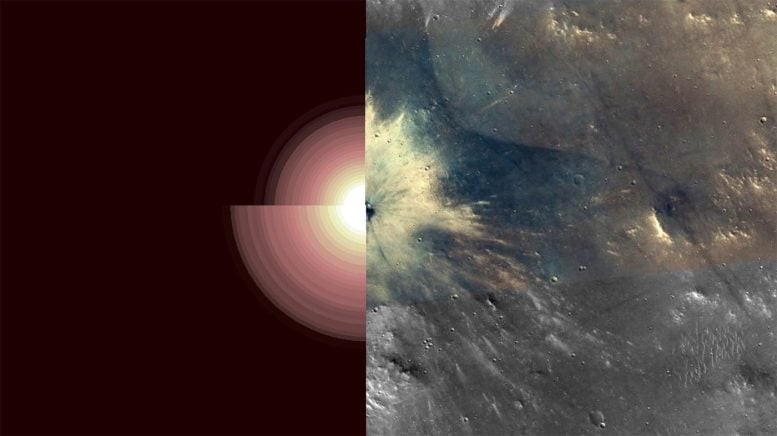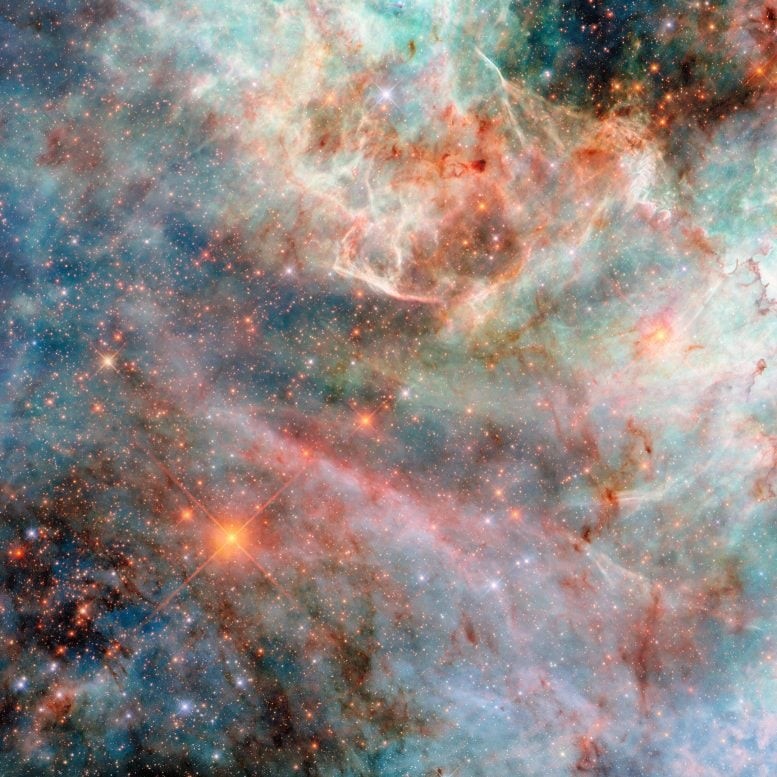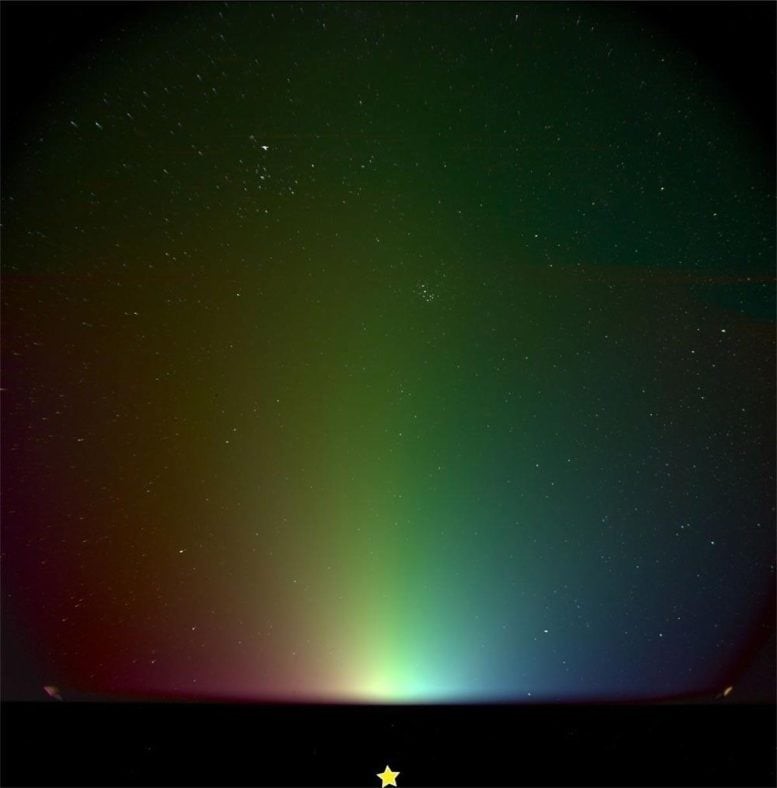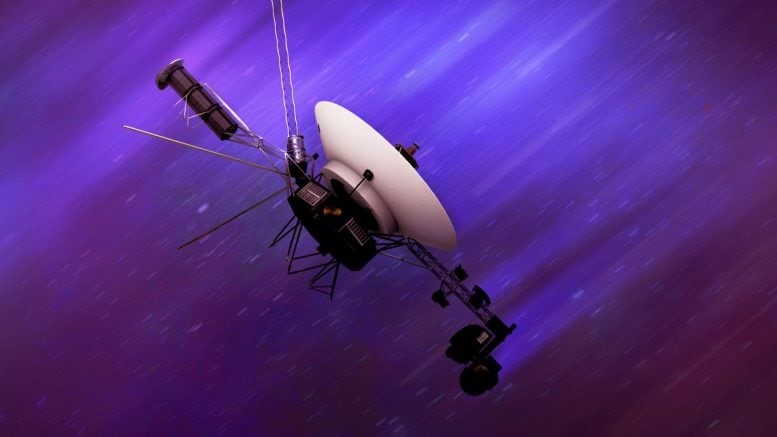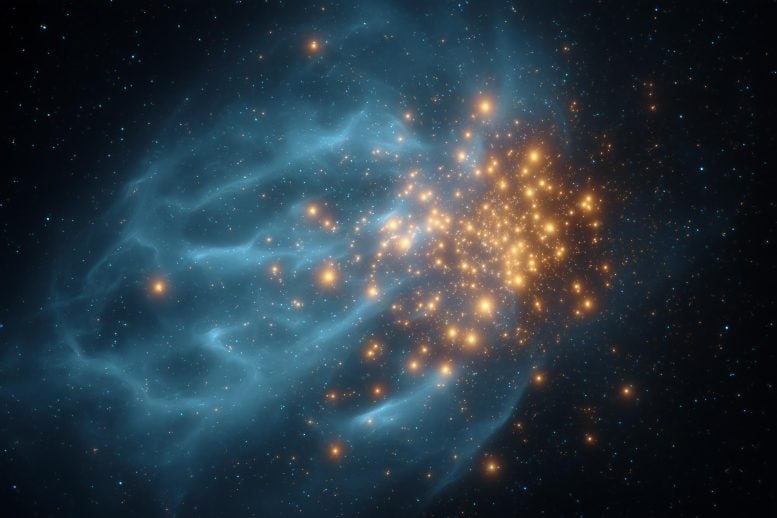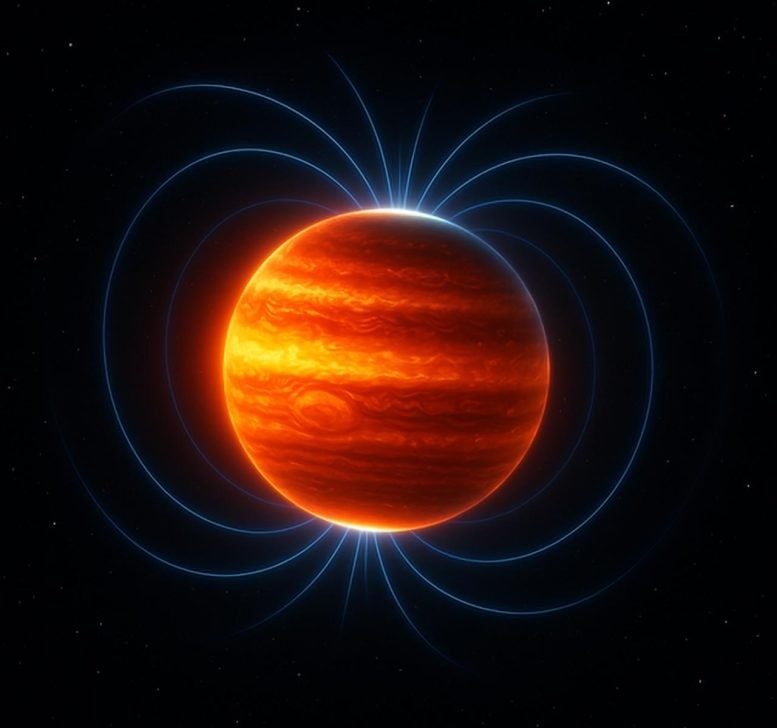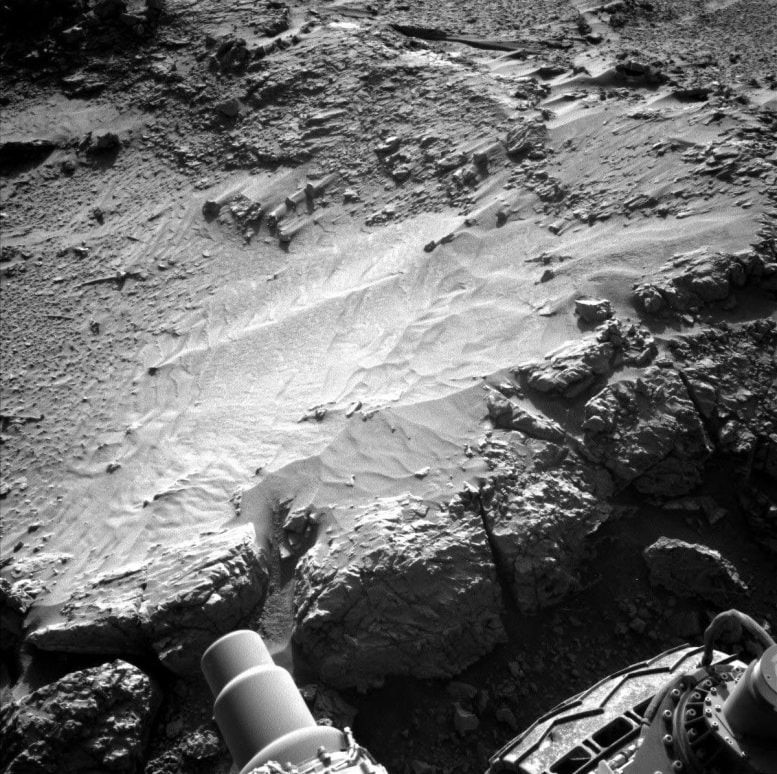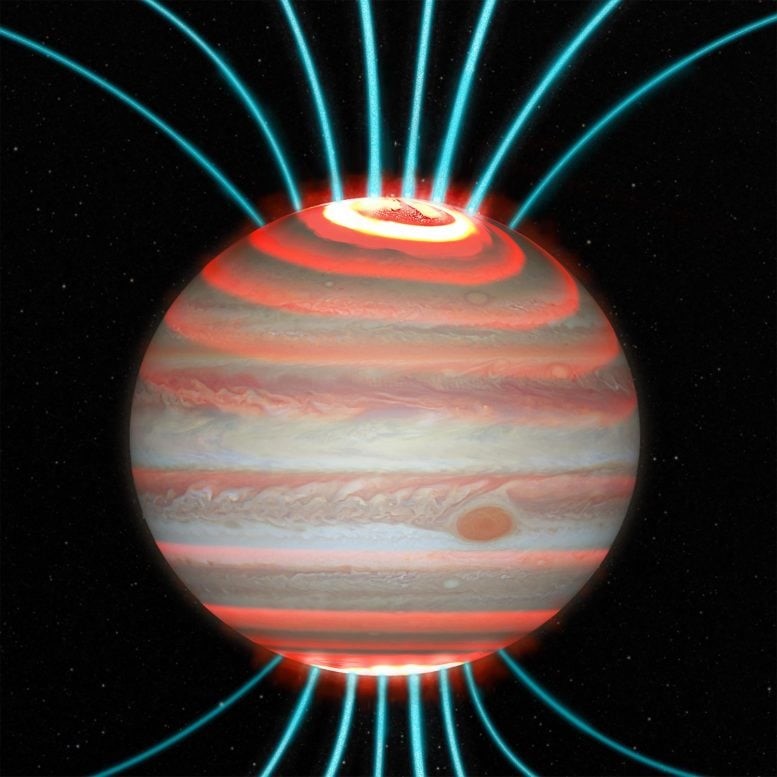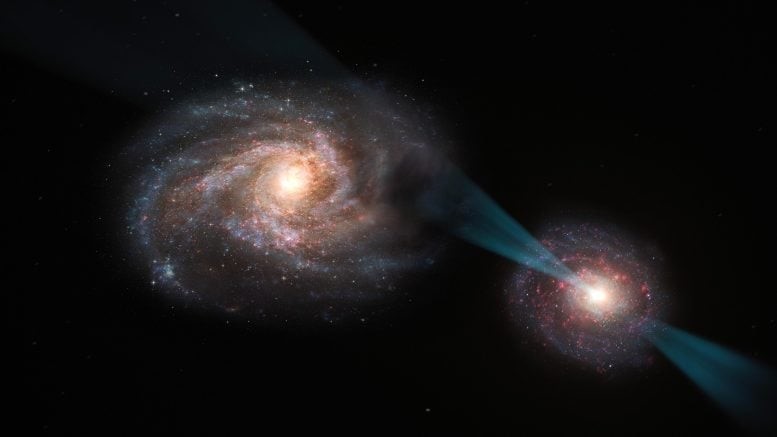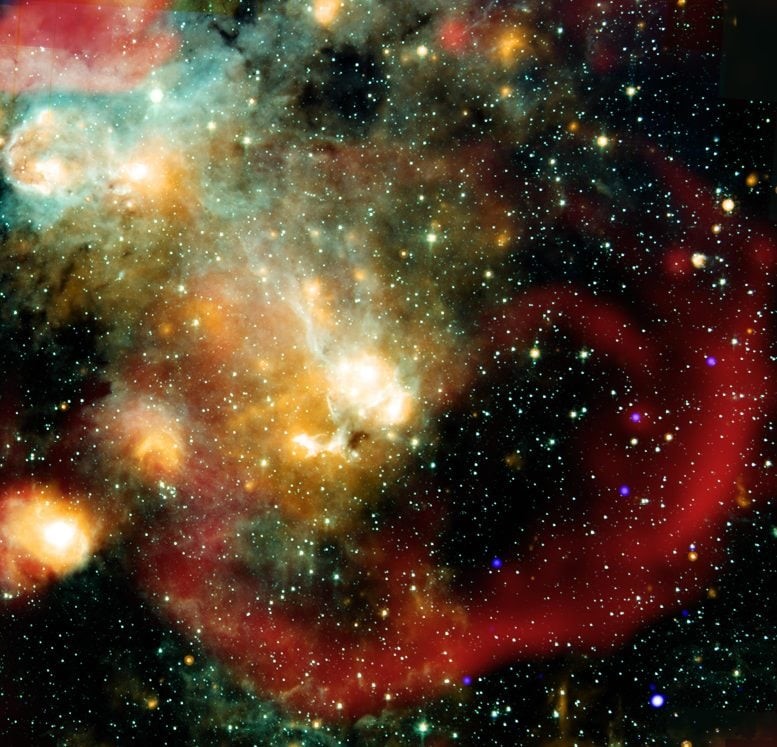NASA’s Perseverance Captures Haunting Pre-Dawn Image of Mars’ Tiny Moon
To capture the image, Perseverance used its left navigation camera to take 16 long-exposure shots, each lasting 3.28 seconds. These individual photos were then stitched together onboard the rover, creating a single composite image representing a total exposure time of 52 seconds before being transmitted to Earth.
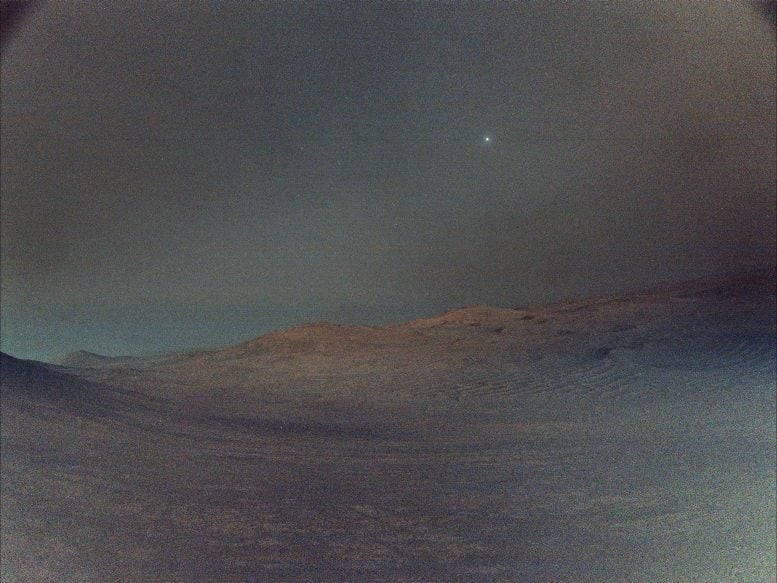
Figure 1. Perseverance Captures Eerie Pre-Dawn Snapshot of Mars’ Small Moon.
Due to the dim lighting, the final image features a soft haze and some digital noise. Many of the white specks seen in the sky are likely camera artifacts, although a few could be cosmic rays. Notably, two of the brightest points in the image are actual stars—Regulus and Algieba—both part of the constellation Leo. Figure 1 shows Perseverance Captures Eerie Pre-Dawn Snapshot of Mars’ Small Moon.
Perseverance captured the image using its left navigation camera, taking 16 long-exposure photos, each lasting 3.28 seconds. These were combined onboard the rover into a single composite image, representing a total exposure time of 52 seconds, and then transmitted back to Earth.
The low-light conditions produced a soft haze and introduced digital noise into the image. While many of the white specks scattered across the sky are likely camera artifacts, some could be cosmic rays. Two of the brightest points in the scene are real stars: Regulus and Algieba, both belonging to the constellation Leo.
NASA’s Perseverance rover, a key component of the Mars 2020 mission, is a pioneering robotic explorer aimed at advancing the search for life on Mars and paving the way for future human missions. Its primary focus is astrobiology—specifically, detecting signs of ancient microbial life on the Red Planet. To support this, Perseverance studies Mars’ geology and ancient climate, helping scientists uncover the planet’s history and its potential to support life.
Perseverance is the first mission to collect and securely store samples of Martian rock and soil (regolith) in sealed containers. These samples are planned for eventual return to Earth through NASA’s Mars Sample Return Program, a partnership with the European Space Agency (ESA) that will allow detailed laboratory analysis like never before.
This mission plays a central role in NASA’s Mars Exploration Program and its broader Moon to Mars strategy, which includes the Artemis missions to the Moon as important stepping stones toward sending humans to Mars.
The rover was developed and is operated by NASA’s Jet Propulsion Laboratory (JPL), managed by Caltech in Pasadena, California.
The Mission and the Moment
Explore the Perseverance rover’s ongoing mission on Mars and introduce the rare moment it captured—a pre-dawn view of Mars’ tiny moon, Phobos. Explain why such images are so unique and challenging to take.
How Perseverance Took the Shot
Dive into the technical side: how Perseverance used its left navigation camera to take multiple long-exposure photos and combined them onboard the rover to create this eerie, composite image.
Understanding the Image Quality
Discuss the image’s soft haze and digital noise caused by the low light conditions, and explain the difference between camera artifacts, cosmic rays, and actual celestial objects seen in the photo.
Spotting Stars on Mars
Highlight the two bright stars visible in the image—Regulus and Algieba from the constellation Leo—exploring their significance and what it means to spot stars from the surface of another planet.
Why This Matters for Mars Exploration
Wrap up by connecting this photo to the bigger picture: how such images help scientists understand Mars’ environment better and contribute to the goals of future exploration and potential human missions.
Source: SciTECHDaily
Cite this article:
Priyadharshini S (2025), NASA’s Perseverance Captures Haunting Pre-Dawn Image of Mars’ Tiny Moon, AnaTechMaz, pp.367


